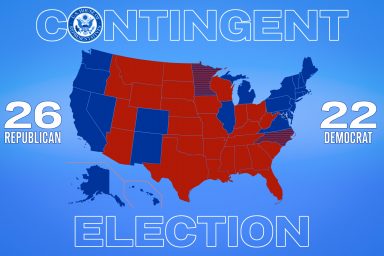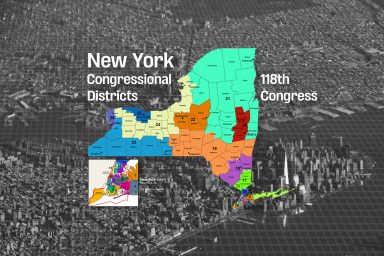The Democrats captured the House, but suffered losses in the Senate, so was there a “blue wave?”
There seemed to be a singular narrative on election night.
Democrats were making an impressive showing, recapturing a majority in the House, while Republicans were strengthening their majority in the Senate.
So was election night an electoral wash or, as President Donald Trump claimed, a GOP victory? No.
Democrats are projected to win a net of 37 House seats. This number may climb as high as 40 once the final races are called, which would be the largest Democratic gain in the House since the Watergate fallout in 1974.
Even more impressively, the Democratic surge occurred while the president’s party is overseeing a relatively healthy economy, with the unemployment rate hovering around 3.7 percent and inflation at a paltry 2.3 percent.
The 2006 midterm election, which was called a “wave” election, saw only a net gain of 32 seats for the Democrats.
The national leftward swing this year occurred on an impressively grand scale. Compared to election results from 2016, only a few dozen districts swung to the right, while a whopping 317 swung to the left. The swing of the average district was 10 points to the left.
Additionally, there were certain advantages for Republicans that should have prevented such losses.
Before the Democratic wave in 2006, there were 24 vulnerable Republicans in districts that had tilted toward the Democrats in the previous two presidential elections. Before the Republican wave in 2010, there were 67 vulnerable Democrats in districts that had tilted toward the Republicans in the previous two presidential elections.
Prior to the 2018 election, there were only nine vulnerable Republicans in districts that had grown more Democratic in the prior two presidential elections. “[The Democrats] are poised to win more seats than they did in 2006,” wrote the Upshot‘s Nate Cohn, “despite far fewer opportunities.”
In Florida and Georgia, the governors’ races have still not been called.
Seven governorships were flipped from Republican to Democratic control — in Nevada, New Mexico, Kansas, Wisconsin, Michigan, Illinois, and Maine. Republicans failed to wrest a single governorship from Democratic control.
Control of the governors’ mansions is critical because, after the 2020 census, governors will be able to either draw new district lines or veto proposed district maps — a huge political advantage with long-term consequences.
The blue wave also extended to state legislatures. Democrats won more than 300 state legislature seats. Furthermore, Democrats were able to complete what’s known as the “trifecta” — control of both state legislature houses and the governorship — in six states (Colorado, Illinois, Maine, Nevada, New Mexico, and New York).
Democrats were also able to erase four Republican “trifectas.” In Kansas, Michigan, and Wisconsin the Democrats won at the gubernatorial level, and in New Hampshire they won both state legislatures. The only state legislative body that flipped from Democratic to Republican control was the Alaska House.
Depending on how the US Senate races turnout in Arizona, Mississippi, and Florida, Republicans will slightly add to their majority. The blue wave may not have reached the Senate, but the 2018 Senate map was statistically brutal for Democrats.
Of the 35 Senate races, Democrats were defending 26 seats while Republicans were only defending nine. Of the 26 seats that Democrats defended, 10 were in states won by President Trump in 2016. In the one race where Republicans were defending a seat in a state carried by Hillary Clinton in 2016, Nevada Sen. Dean Heller (R) lost.
All things considered, Democrats made an impressive showing. The blue wave may have been short of a tsunami, but it certainly changed the political landscape.



